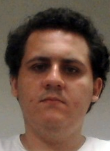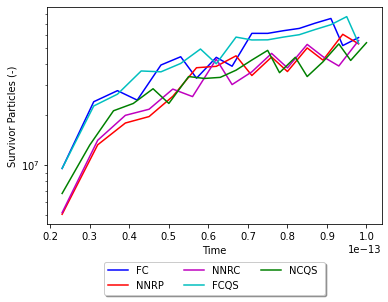 |
|
||||
BiographyFelipe was born in 1987 in Rio de Janeiro, Brazil. He received his Electronic and Computational Engineering degree from the Federal University of Rio de Janeiro in 2015. Subsequently, he studied Microelectronics at COPPE, where he wrote his Master's thesis at the Laboratório de Projeto de Circuitos, receiving his MSc. Degree in Electrical Engineering in 2018. After finishing his studies he joined the Institute for Microelectronics in January 2019, where he is currently working on his doctoral degree. Felipe is researching parallel numerical approaches for solving the Boltzmann Equation. |
|||||
Annihilation Algorithms for Wigner Signed-particle Methods
Signed-particle methods are attractive for solving the Wigner transport equation via Monte Carlo methods. Although they enable acceptable simulation run times, the primary challenge of exponential particle generation still poses a limitation to large-scale studies. To reduce memory requirements, the number of signed particles must be kept under control, otherwise the computing system might run out of memory before the simulation converges. An important aspect of signed-particle methods is that during the temporal evolution of the system, two particles with different signs will eventually have the same position and momentum. Therefore, these particles can be removed from the simulation domain in a process called annihilation, without interfering in the convergence of the method. Thus, it is necessary to discretize the phase space in order to search for particles with the same position and momentum. In ViennaWD, the discretization of phase space is implemented using a grid of cells. However, a new problem needs to be solved: pairs of particles in neighboring cells, which are not straightforwardly considered, should also be annihilated. This search is very computationally intensive, and thus the time spent on the annihilation is a large fraction of the total computation time.
Four new annihilation algorithms were developed to address this problem, particularly focusing on the neighboring cell problem:
(1) Nearest Neighbor Random Cell (NNRC): Extend the particle search space towards neighbor cells. (2) Nearest Neighbor Random Particle (NNRP): Use all particles in the simulation as search space for the annihilation still considering the neighbor cells. (3) Fixed Cell Quick Sort (FCQS): Use the quick sort algorithm to sort all particles and compute the annihilation inside each cell. (4) Nearest Cell Quick Sort (NCQS): Extend FCQS to consider neighbor cells.
We evaluate these algorithms using a simulation benchmark in ViennaWD, consisting of a waveguide with the dimensions 20 nm by 30 nm with a potential well placed in its center. Fig. 1 shows the number of surviving particles for each algorithm, where FC (Fixed Cell) is the reference implementation not considering neighbor cells. It is shown that a reduction in the number of surviving particles for NNRP, NNRC, and NCQS algorithms is achieved, which was expected since pairs of particles in neighboring cells are now considered.

Fig. 1: Number of surviving particles after the annihilation process with the reference implementation (FC) and the four developed algorithms.


